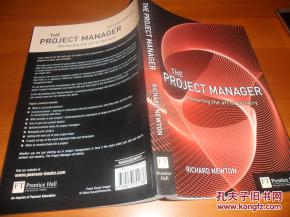Introduction: Fishing in flat water, such as lakes, ponds, and reservoirs, can be both relaxing and challenging. Flat water fishing requires a different approach compared to fishing in rivers or streams. In this article, we will discuss various fishing techniques specifically tailored for flat water fishing, focusing on how to tackle the challenge of catching fish in calm water conditions.
Understanding Flat Water Conditions: Flat water conditions refer to calm, still water bodies with minimal wave action. These conditions can make it difficult for fish to locate prey, which in turn makes them more cautious and selective. To succeed in flat water fishing, it is crucial to understand the unique characteristics of these environments.
Choosing the Right Equipment: Selecting the appropriate equipment is the first step towards successful flat water fishing. Here are some essential gear items to consider:
a. Rod and Reel: Choose a lightweight, sensitive rod with a moderate action. A good flat water rod should be capable of handling various techniques and lures.
b. Line: Use a monofilament or fluorocarbon line with a low stretch. This will help you detect subtle bites and maintain better line control.
c. Lures and Baits: Opt for lures that mimic natural prey, such as insects, minnows, or crayfish. Soft plastics, spinnerbaits, and crankbaits are popular choices in flat water fishing.
d. Tackle Box: Carry a variety of lures, baits, and terminal tackle, including hooks, sinkers, swivels, and split rings, to adapt to different fishing scenarios.
Finding the Hot Spots: Identifying productive areas in flat water is crucial for success. Here are some tips to help you locate hot spots:
a. Structure: Look for submerged rocks, logs, weeds, and drop-offs, as these areas often hold fish.
b. Vegetation: Target areas with abundant aquatic vegetation, as these spots can provide both cover and food sources for fish.
c. Depth: Fish tend to congregate in areas with varying depths, so explore different depths to find active fish.

d. Current: In slow-moving or still water, fish may gather near the edges or in areas with subtle currents.
Techniques for Flat Water Fishing:
a. Still-Fishing: This technique involves casting your lure or bait to a specific spot and waiting for a bite. It is ideal for targeting inactive fish. Keep your rod tip slightly elevated and be patient, as fish may take a while to strike.
b. Trolling: Trolling is a productive technique for covering larger areas. Attach your lure or bait to a steady retrieve, and move it slowly through the water column. Adjust your speed and depth based on the fish's preferences.
c. Jigging: Jigging involves casting your lure and then moving it up and down in the water column. This technique is effective for triggering strikes from fish that are suspended or holding near the bottom.
d. Pitching and Pounding: Pitching involves casting your lure directly towards a target and then retrieving it with short, sharp movements. Pounding is a variation of pitching that involves striking the lure against the bottom to create a commotion and attract fish.
Tips for Improving Your Flat Water Fishing Success:
a. Pay Attention to Weather Conditions: Windy conditions can stir up the water, making it easier for fish to locate prey. On calm days, fish may become more cautious, so it's essential to work harder to attract their attention.
b. Adjust Your Presentation: Fish may be more susceptible to certain presentations in flat water. Experiment with different retrieves, colors, and sizes to find what works best.
c. Be Patient: Flat water fishing can be frustrating at times, as fish may not bite immediately. Maintain a patient and positive attitude, and be prepared to wait for the perfect opportunity.
d. Stay Informed: Keep up with local fishing reports and conditions to stay informed about the best spots and techniques for flat water fishing in your area.
Conclusion: Flat water fishing presents unique challenges, but with the right techniques and equipment, you can enjoy successful outings. By understanding the characteristics of flat water conditions, selecting the appropriate gear, finding productive hot spots, and mastering various techniques, you'll be well on your way to becoming a proficient flat water angler. Remember to stay patient, adapt to the conditions, and enjoy the peaceful experience of fishing in calm water.












